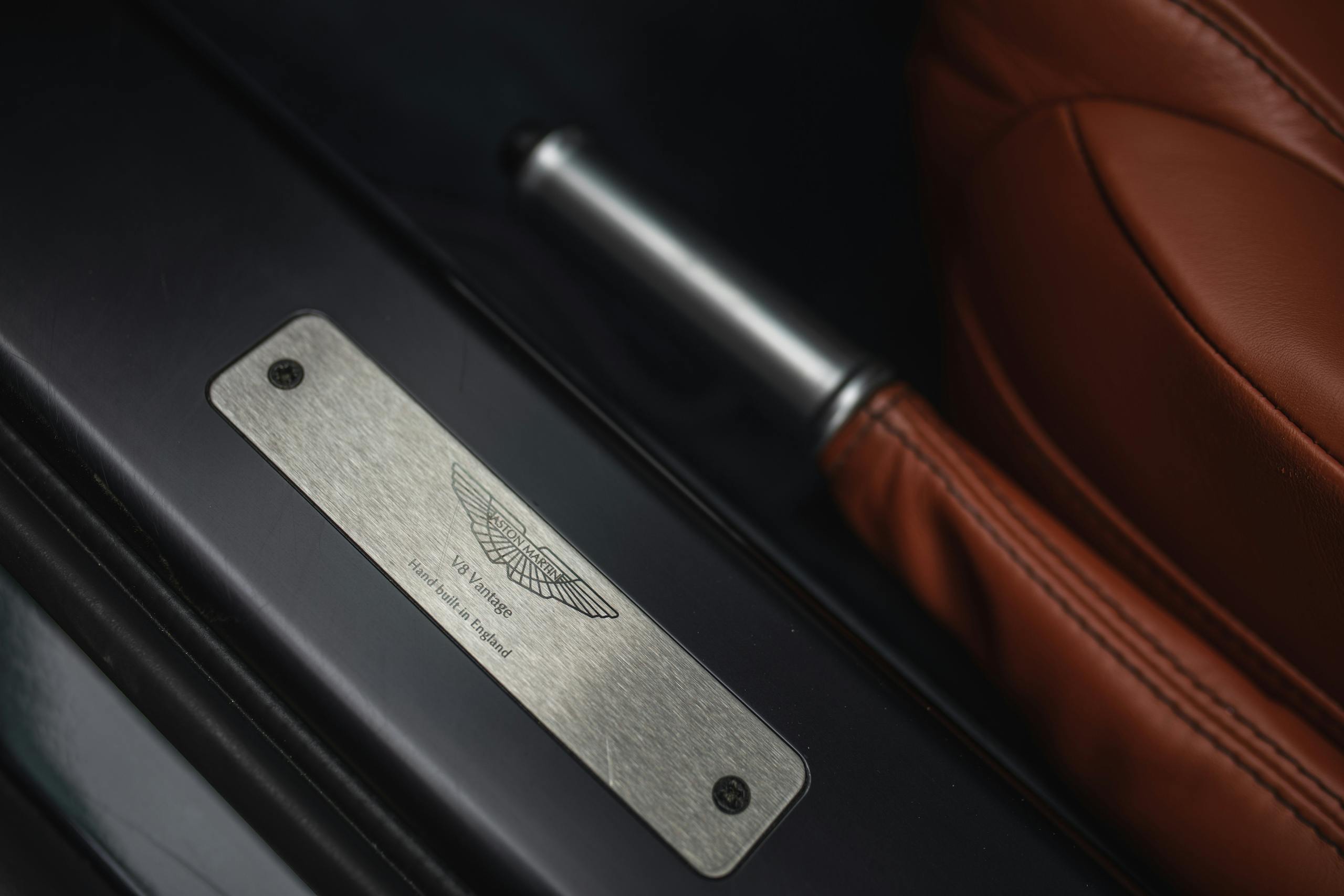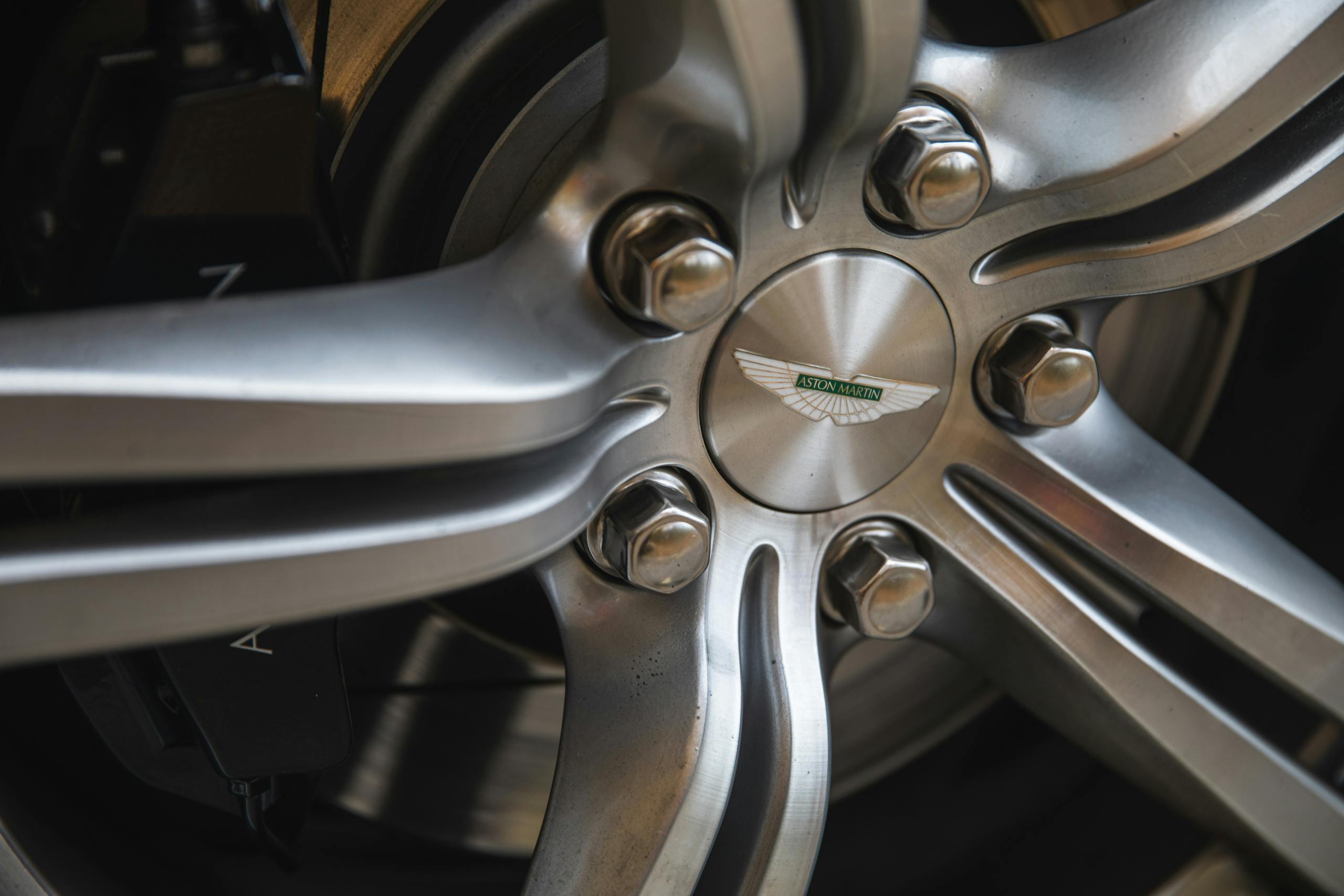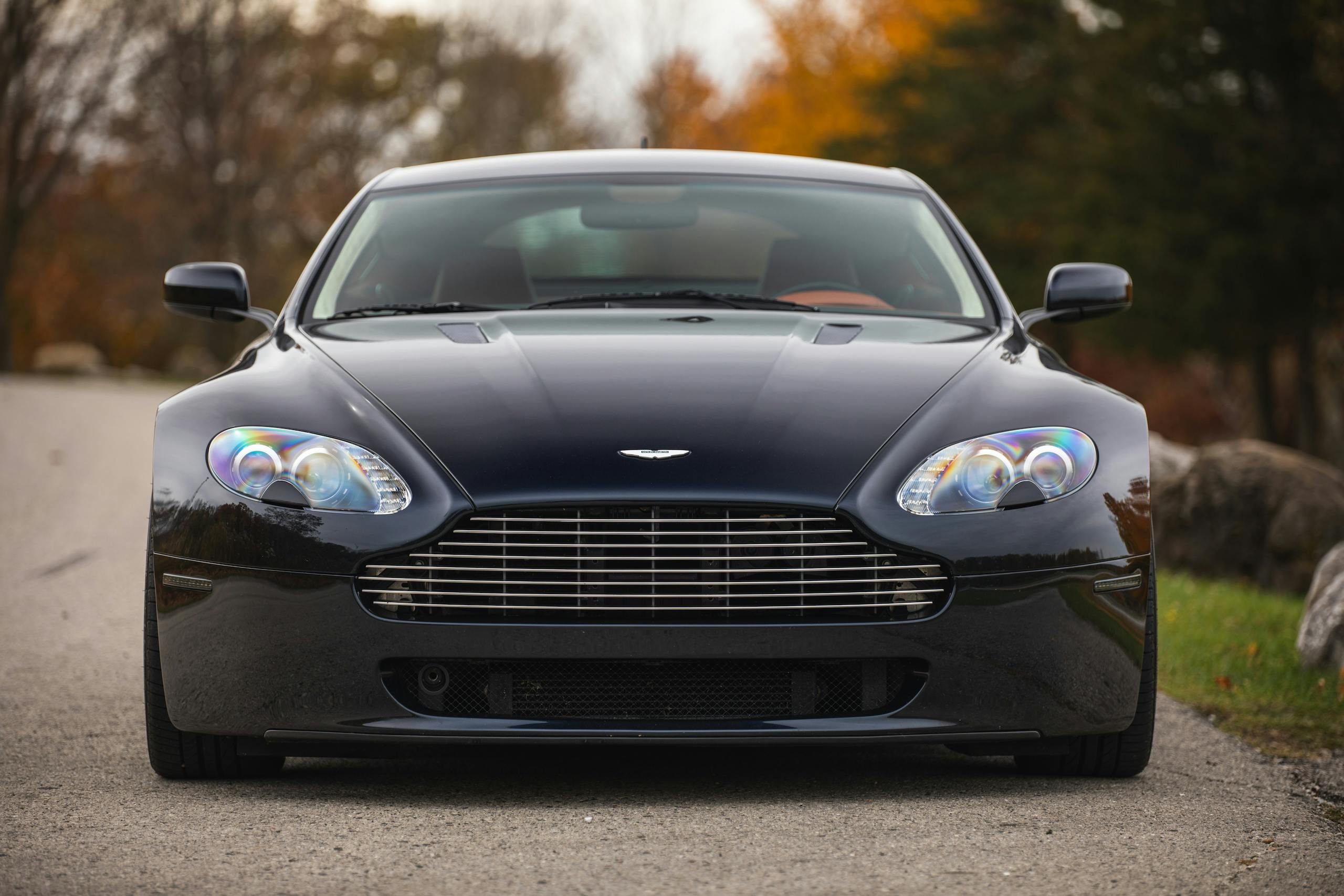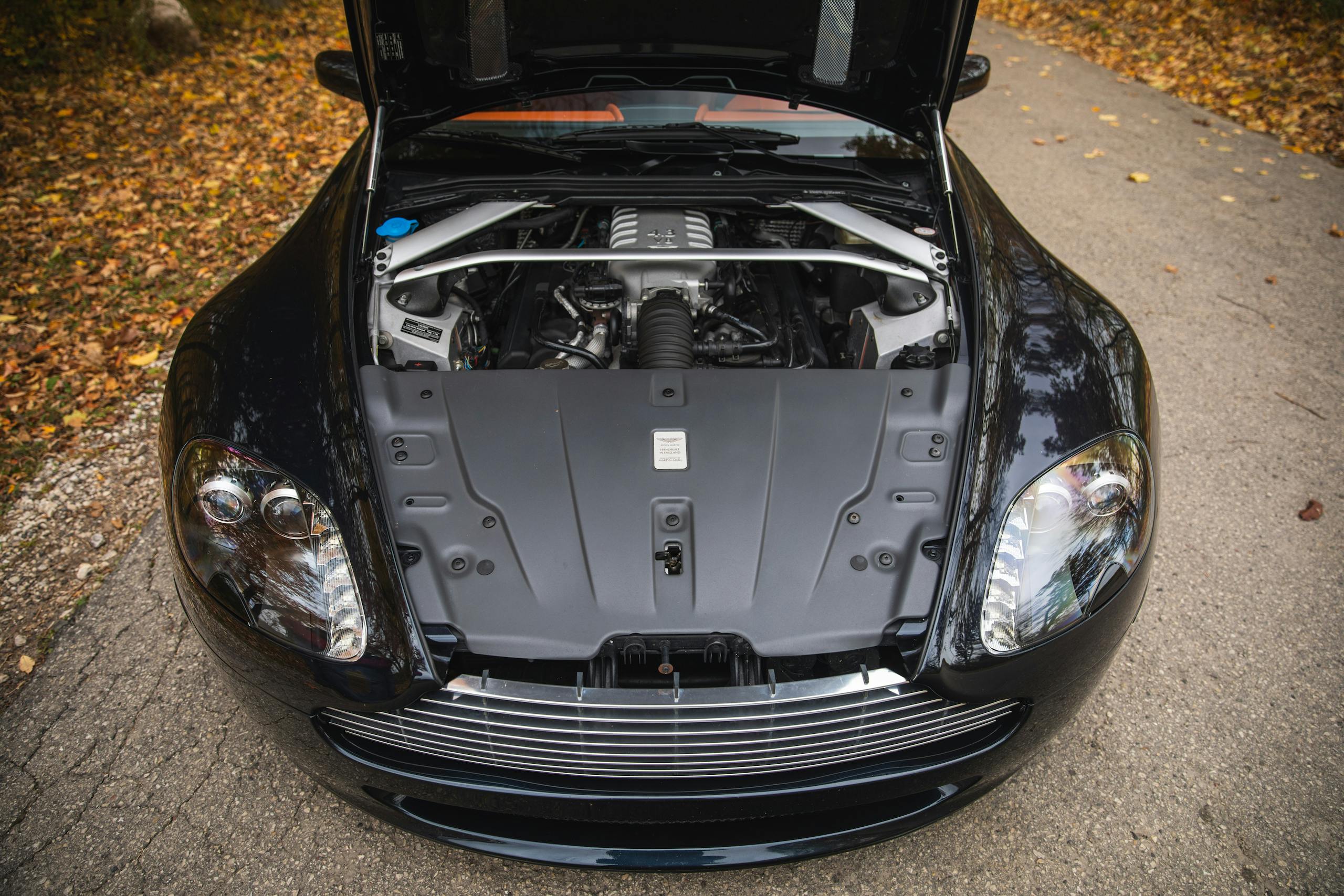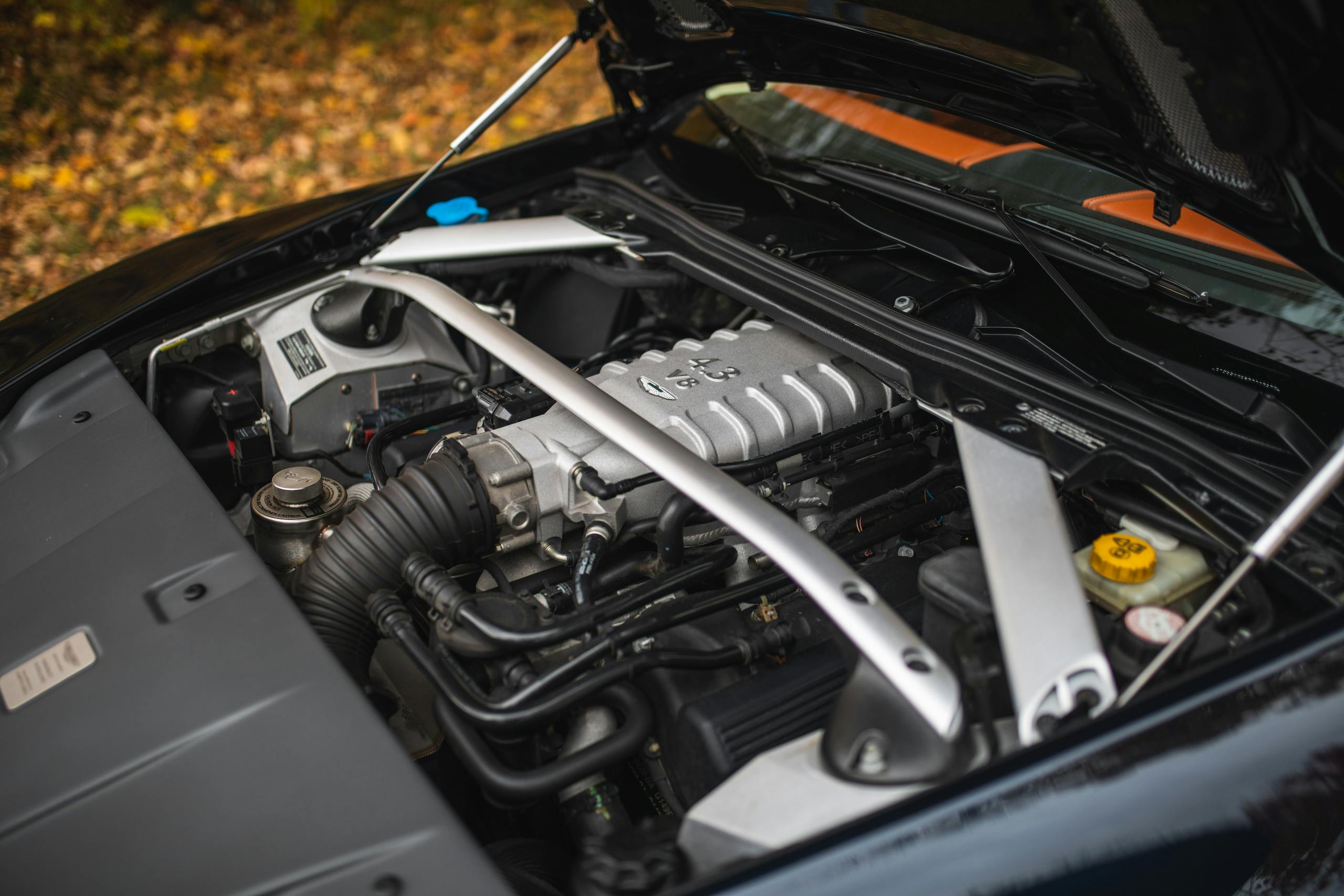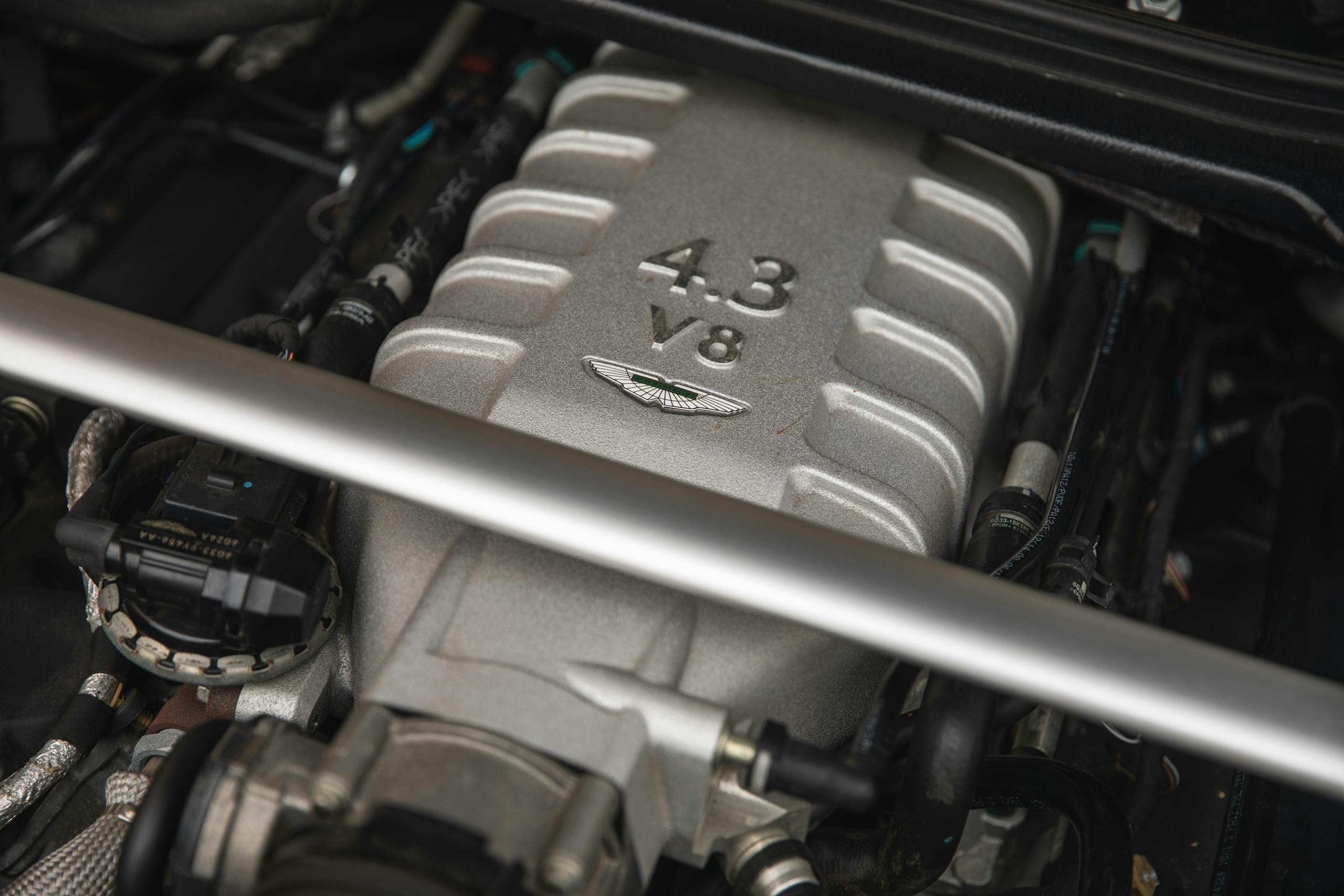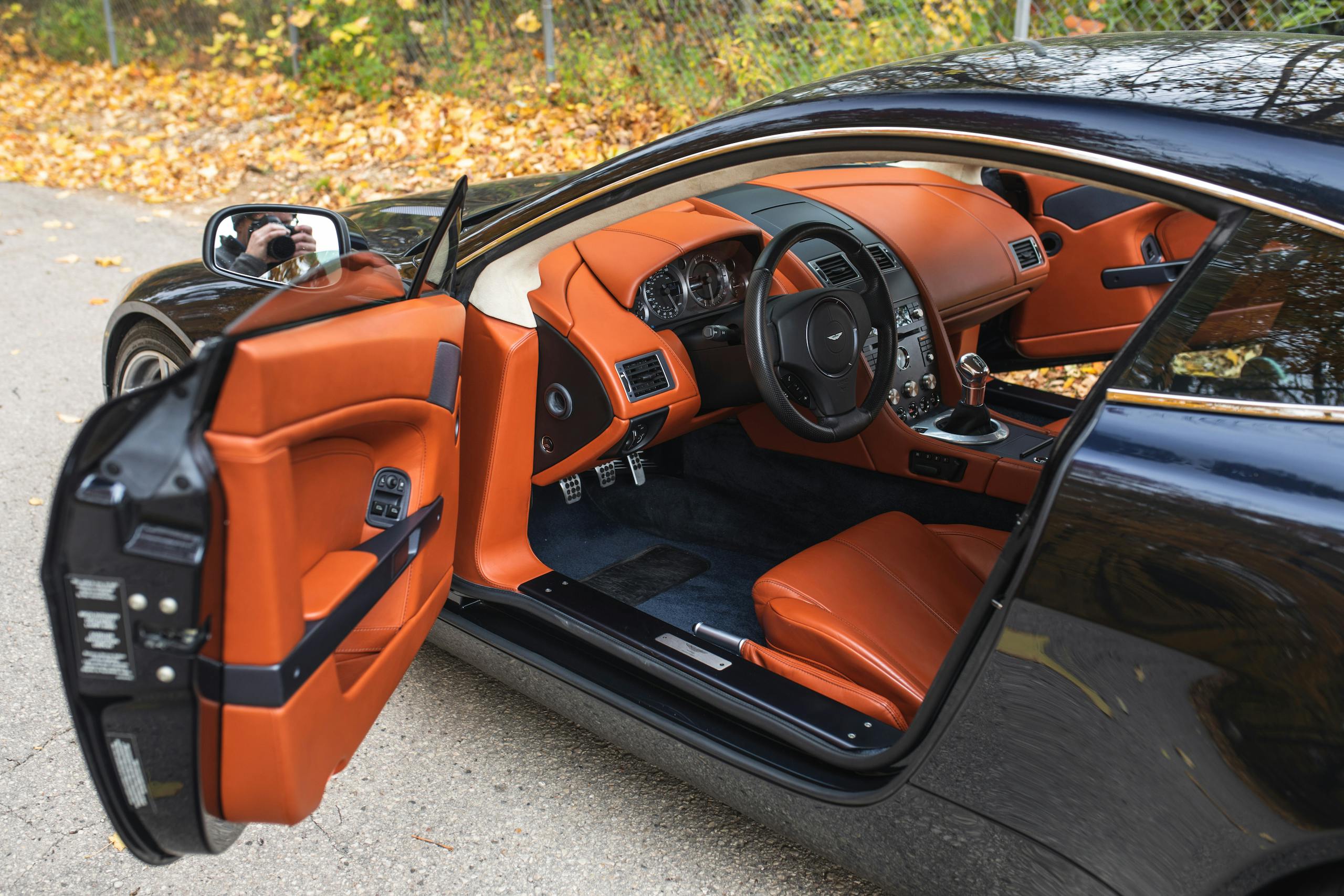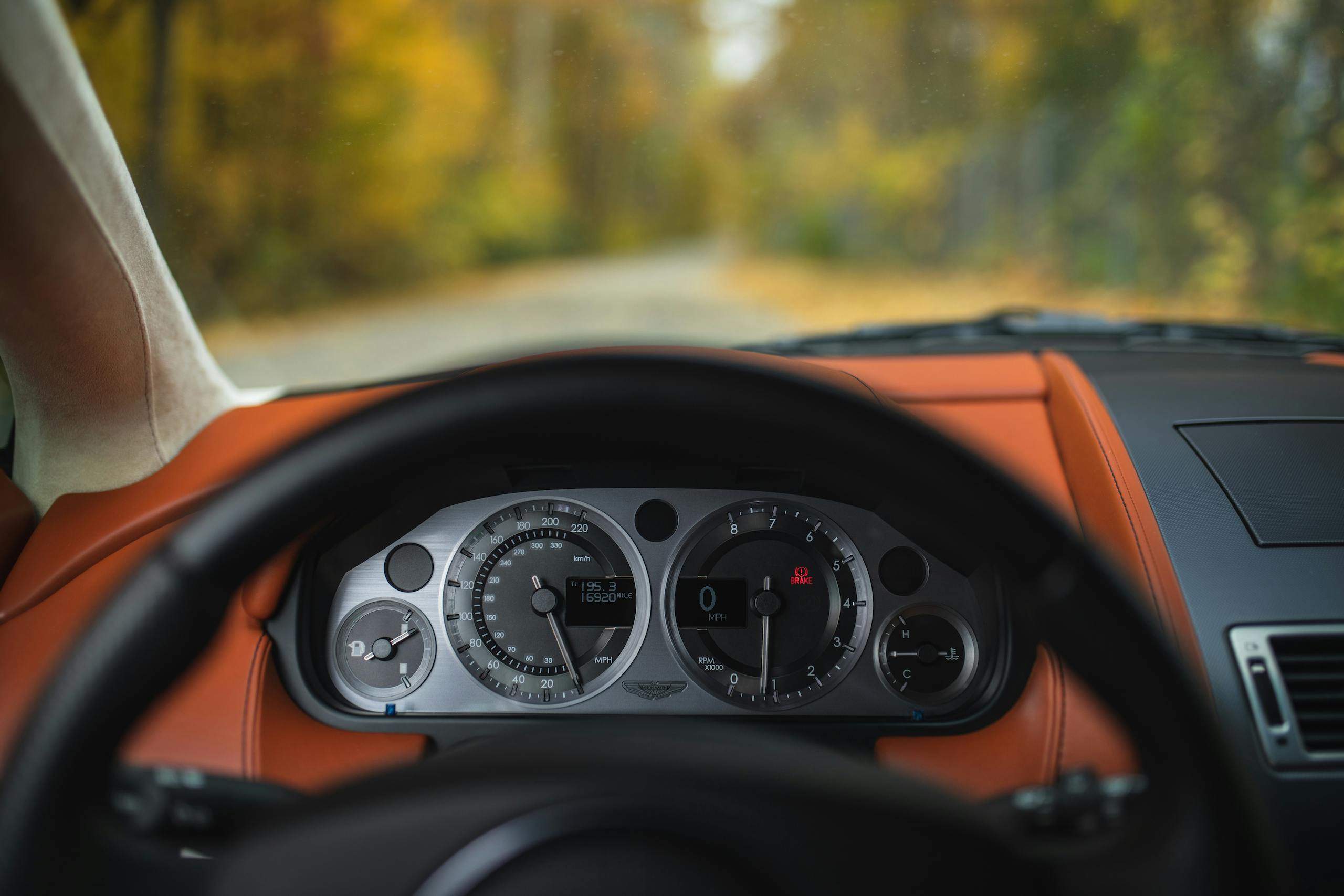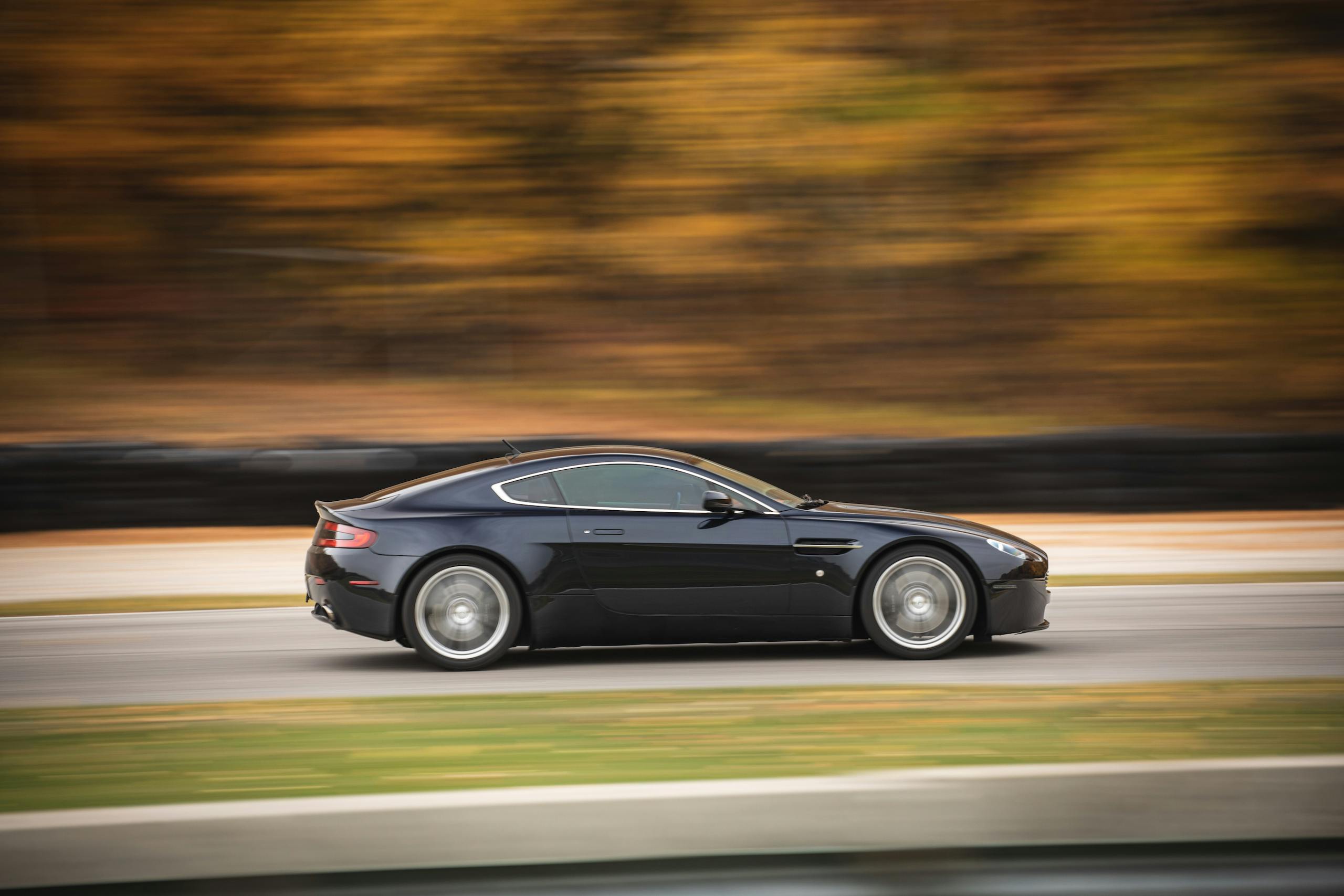Media | Articles
Your handy (2006–17) Aston Martin Vantage buyer’s guide
Drive a Porsche 911, and you’re likely to see yourself coming and going every time it leaves the garage. Drive an Aston Martin V8 Vantage, and you’re almost sure to be all alone, driving one of the most gorgeous automobiles ever built.
But which Vantage are we talking about? The name has been used as a full model since the early 1970s, and as a branch of other models since the early 1950s. We are interested in the 2006–2017 V8 Vantage: The leanest, most agile car in Aston Martin’s stable at the time. Here’s a thousand foot overview of what each year had to offer:
Model overview
2006
The Henrik Fisker-designed V8 Vantage hit the stage at the Geneva Auto Show in 2005 as a 2006 model. Sporting a hand-built, dry sump, 4.3-liter, quad-cam V-8 that was derived from the AJ V-8 (used in Jaguars, the Lincoln LS, and the Ford Thunderbird) the AJ37 engine is all Aston Martin. The block, heads, cam, crank, pistons, connecting rods, and intake/exhaust manifolds are bespoke, and the sounds it makes are still remembered today.
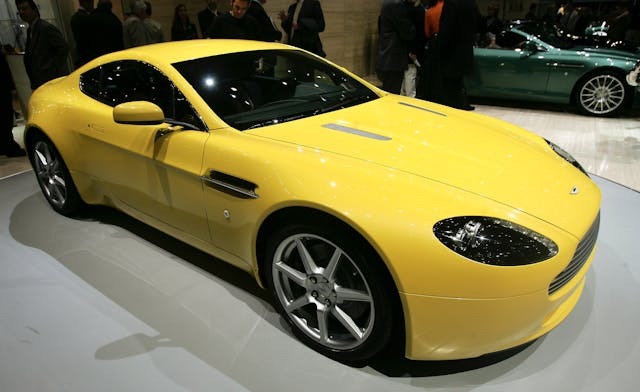
Italy’s Graziano Trasmissioni provided the six-speed manual transaxle, and the independent, double-wishbone suspension meets the road via staggered 18 x 8.5 and 1 8x 9.5 wheels fitted with Bridgestone Potenza rubber (235/45ZR18 front, 275/40ZR18 rear). The brakes are world-class Brembos: 14 inches up front, and 13 inches in the rear. The chassis is a monocoque constructed of bonded aluminum, and buyers had the choice between a Coupe and the Roadster, the latter of which debuted a bit later at the 2006 Los Angeles Auto Show.
Inside is where the critical eye recognizes the V8 Vantage’s parts-bin engineering. Everywhere you look, there are subtle hints of Aston Martin’s involvement in Ford’s Premier Automotive Group. There were Volvo parts all over the interior, from the premium audio system to the the levitating navigation system, power window switches, and key fob (which has a Volvo logo under the leather skin). But none of this detracts from the gorgeous, chronograph-inspired instrument panel, nor the overall upscale feeling of the Vantage V8’s interior design. The waterfall center stack is delightful, although it’s littered with more buttons than a switchboard operator’s terminal. The seats are amazing, and the headliner is slathered in Alcantara.
Marketplace
Buy and sell classics with confidence
2006.5
Shortly after the V8 Vantage went on sale, changes were already afoot: early production versions had yellow LED readouts in the center of the instrument panel, which were changed to white LEDs. The white readouts are visible in the 2006 model year brochure.
2007
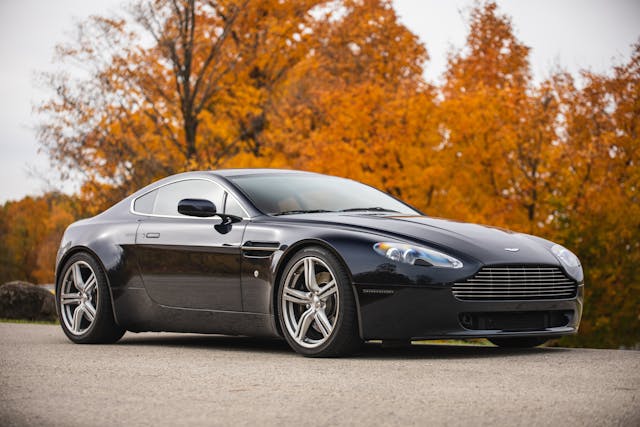
In the second quarter of 2007, Aston Martin introduced a new transmission option for the V8 Vantage: the “Sportshift” six-speed automated manual. The transmission was developed by Prodrive, a British motorsports and advanced technology engineering group, with a clutch just like a manual but no third pedal. Shifting was operated via paddles, or automatically by leaving the gear selector in Drive. Aston Martin claimed that when equipped with Sportshift, V8 Vantage gear changes were executed in 0.2 seconds.

2007 marked a revision in seat upholstery patterns, but the bigger news was the V8 Vantage N400, which commemorated the brand’s racing victories at the Nürburgring. Unveiled at the 2007 Frankfurt Auto Show, the 4.3-liter V-8 got a boost to 400 hp. It also received the Sports Pack, which was available on later years of the V8 Vantage. This package included lightweight wheels, uprated springs and shocks, and a revised rear anti-roll bar. Customers could finish their N400 in one of three colors: Bergwerk Black, Lightning Silver, or Karussell Orange. Inside, the N400 was upholstered in perforated leather, and there was a map of the Nürburgring stitched onto the center armrest along with a numbered plaque. Aston evaluated the car at the Nordschleife circuit, and the car inked a lap time that came in under eight minutes. In a nod to the 480 seconds it took to complete the course, 480 examples of the N400 were built, split evenly between Coupe and Roadster variants.
2008
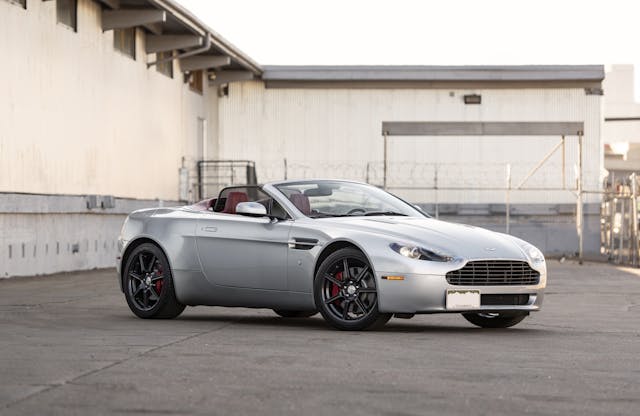
In May of 2008, Aston Martin announced revisions to the V8 Vantage that endured throughout its production run. The engine grew in displacement thanks to an increase in bore and stroke, for a total of 4735 cc. While the 4.3-liter had cylinder liners cast into the block, the new 4.7 had cylinder liners pressed into the pre-machined aluminum-alloy block. The revised engine featured a new forged steel crankshaft, with holes in the counterweights for reduced mass. The V8 Vantage’s dry sump was improved, in a new casting with pickups moved from the front and rear to the sides of the sump. The heads received new intake ports, and the intake valves increased from 34.9 mm to 35.9 mm. Both manual and Sportshift transmissions were updated for 2008 with a modified clutch and flywheel. The shift mapping on the Sportshift was also tweaked.
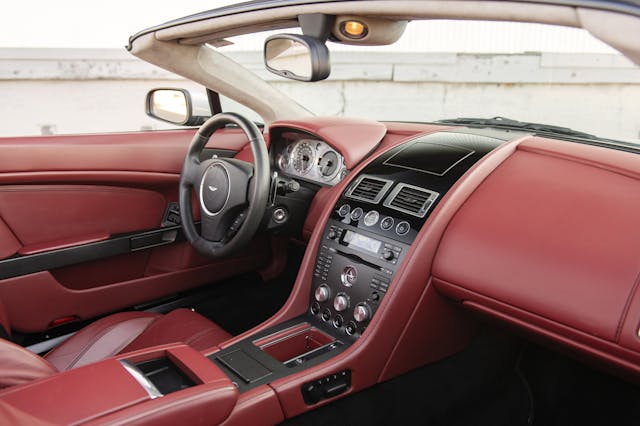
The suspension received a number of updates, including Bilstein dampers all around, as well as revised upper shock mounts and bump stops. Spring rates were stiffened by 11 percent at the front and 5 percent at the rear, while front lower suspension arm bushings were made 22 percent stiffer to improve steering response and handling. Aston Martin also expanded the availability of the N400’s Sports Pack, offering lighter, forged five-spoke alloy wheels, re-tuned Bilstein dampers, and even further uprated springs, with a revised rear anti-roll bar for the N400 Coupe.
The stunning exterior didn’t change this year, and instead Aston Martin unveiled a new, standard 20-spoke, 19-inch alloy wheel finished in either diamond-turned silver or graphite. Inside, there was a new center console made of die-cast zinc alloy, with a graphite silver finish.
After the 2008 update, the following year-to-year model changes were minimal, and significant changes were limited to the special edition variants which were introduced in a semi-regular cadence.
2010
For the 2010 model year, the N420 package replaced the N400 and was available in either the Coupe or Roadster body styles, with either the six-speed manual or the optional Sportshift. The N420 received the Sports Pack suspension, along with a new exhaust, and a 60-pound weight reduction, thanks to a generous application of carbon fiber. “Race Collection” paint combinations were available as an option, but the color palette was wide open. The N420 received a carbon-fiber splitter, side strakes, a diffuser, and 10-spoke alloy wheels finished in gloss black.
2011

In January of 2011, Aston Martin released the V8 Vantage S, available in both Coupe and Roadster forms. The “S” included a number of engine improvements to the 4.7-liter V-8—improved airflow, new mufflers, new programming to keep the exhaust bypass open longer—which bumped output to 430 hp and 361 lb-ft of torque at 5000 rpm. Zero-to-sixty acceleration dropped to just 4.5 seconds, while top speed rose to 189 mph.
The standard (and only) transmission in the V8 Vantage S was the new Sportshift II, a seven-speed, single-clutch automated manual gearbox, that shaved off 53 pounds from the old six-speed Sportshift. Bushings, springs and dampers were stiffened for the S, and the steering rack had a quicker ratio. Nineteen-inch cast aluminum wheels wore 285/35ZR19 Bridgestone Potenza rubber. The S featured exterior aerodynamic updates, including a deeper front bumper with a carbon-fiber splitter, larger sills, a carbon-fiber diffuser, and a larger rear spoiler.
2013
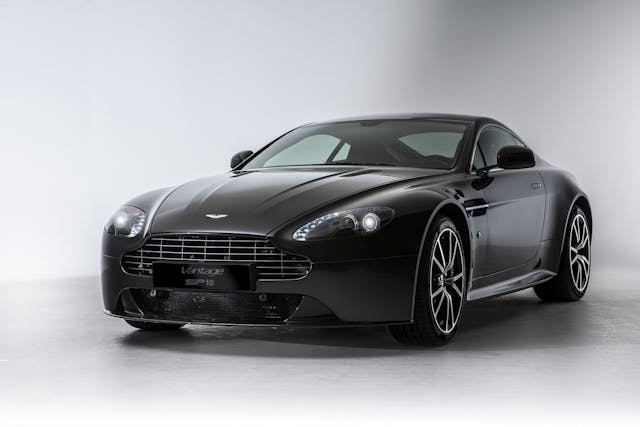
The SP10 debuted this year, again to celebrate achievements at the famous Nürburgring. The SP10 was powered by a 430-hp version of the 4.7-liter V-8. The only mechanical difference between the SP10 and the V8 Vantage S was that the six-speed manual came standard, with the Sportshift II being optional.
Unique features included clear tail lamps, Ceramic Gray paint (matched to a Titan Gray soft top on the Roadster), and 19-inch cast aluminum wheels finished in high gloss black with black brake calipers. A carbon-fiber front splitter and rear diffuser rounded out the SP10’s equipment.
2015
In April 2014, the night before the opening of the New York International Auto Show, Aston Martin pulled the wraps off of the V8 Vantage GT, essentially the U.S. version of the N430 variant that was already available in other markets. It featured the 430-hp version of the AJ37 V-8, V8 Vantage S suspension updates, and a handful of unique styling features. The GT was available with either the six-speed manual or the seven-speed Sportshift II transmission, and it was offered as both Coupe and Roadster.
2017
For 2017, Aston Martin announced the V8 Vantage GTS, featuring—drumroll please—the same 430-hp AJ37 engine, and either the six-speed manual or the seven speed Sportshift II. The GTS was available in two different trims: Sport and Lux. Sport featured the Sport suspension, carbon-fiber exterior details, leather and Alcantara inside, and an upgraded audio system. The Lux trim went a different route, with piano black accents, polished exterior details, and a new Comfort suspension setting. Just 100 GTS units were available, and all of them came to the United States.
2017 also brought the track-focused, 220-pound lighter Vantage GT8 coupe. Limited to just 150 cars, the 4.7-liter V-8 got a slight boost to 440 hp and a 1 mph faster top speed at 190 mph. Buyers could order either the six-speed manual or the Sportshift II transmission.
Before you buy

While these cars have taken a serious depreciation hit since their initial asking price of between $110,000 and $130,000, they’re still expensive and would-be buyers need to mind their pocketbook when considering one. So at the risk of stating the obvious, considering a V8 Vantage means you’re not buying the type of machine in the same solar system as a pre-owned Lexus.
No matter what year V8 Vantage you’re looking at, exhaustive service documentation (hopefully from an Aston Martin specialist and not from a place like Jiffy Lube) is all but essential. Every standard precaution associated with purchasing a used car from the current millennium applies, but major issues can have a breathtaking impact on a V8 Vantage’s value. Not only do you want a qualified specialist to look at it the car’s mechanicals, you also need someone to examine its aluminum bodywork to check for any evidence of collision damage. That said, since these cars are aluminum, body rust isn’t something you need to worry about. Rust on the subframe is another matter, and will cost big bucks to set right. Walk away from such examples.
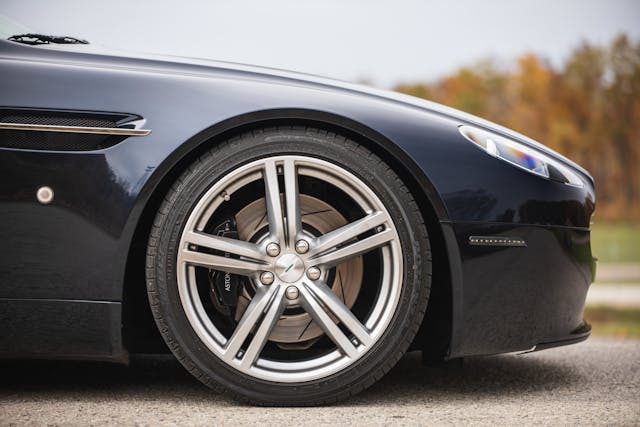
A distressing number of V8 Vantage owners had issues riding the clutch before shoving the gas pedal to the mat, which resulted in a lot of fried clutches on six-speed manual examples. Replacing one is easily a $4000 expense, so a receipt showing recent clutch replacement is a bonus. Aston Martin owners complain about the usual electrical issues, problems with the navigation system being one of them, but the interior quality is generally exceptional.
The doors on the V8 Vantage are a work of art. When opened, they swing up slightly to help you avoid scraping the paint off the bottom. The struts holding them in place, however, eventually lose their integrity, allowing the door to slam on your tibia. The good news is that the struts are only about $50 each, and there are a number of DIY replacement videos online.
Valuation

The Aston Martin V8 Vantage has only recently been added to the our valuation data pool, and historic values are only available since 2016. Of course, with the last cars rolling out of Aston’s Gaydon facility in 2017, the youngest of these cars are still depreciating. Our data shows that every iteration is down in value over the last five years, with Roadsters suffering an 11 percent dip. Median #2 (Excellent) value for every year of production is down eight percent over that same time span.
Measuring from the time this Vantage ended production, from 2017 to 2020, tells a different story. In that stretch of time V8 Vantage values went up 3 percent, with a 0.5 percent growth from 2019 to 2020. Our Valuation team predicts this could be a sign of the V8 Vantage accelerating out of its depreciation curve, and we even named the model to our coveted 2021 Bull Market list.
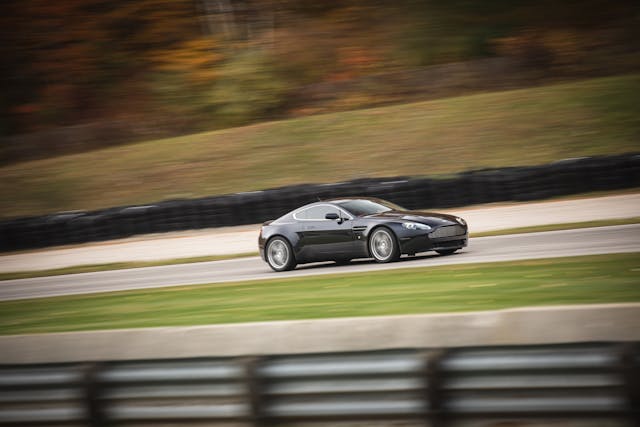
The median quoted value over the past three years is $56,700, equating to just about what you’re going to spend on a #3 (Good) to #2 (Excellent) condition car. The bulk of these Astons are owned by baby boomers, but that’s no surprise considering this demographic makes up 40 percent of the overall vintage car market. What’s interesting is that Gen Xers, who represent 30 percent of the entire market, are right behind boomers in V8 Vantage ownership, owning 31 percent of all the examples in Hagerty’s database. It’s likely that the largely positive media coverage these cars received when new had a huge impact on millennials, too. This demographic own 26 percent of all the V8 Vantages Hagerty tracks, while making up 18 percent of the total market.
If you’re considering one of these handsome, sporty GT cars, the earliest examples may well be at the valley of their depreciation curve. If you find one in clean condition with low mileage and a Sears catalog-sized receipt binder in tow, one of this century’s most beautiful, most lovely-sounding automobiles might be more appealing now than ever.

